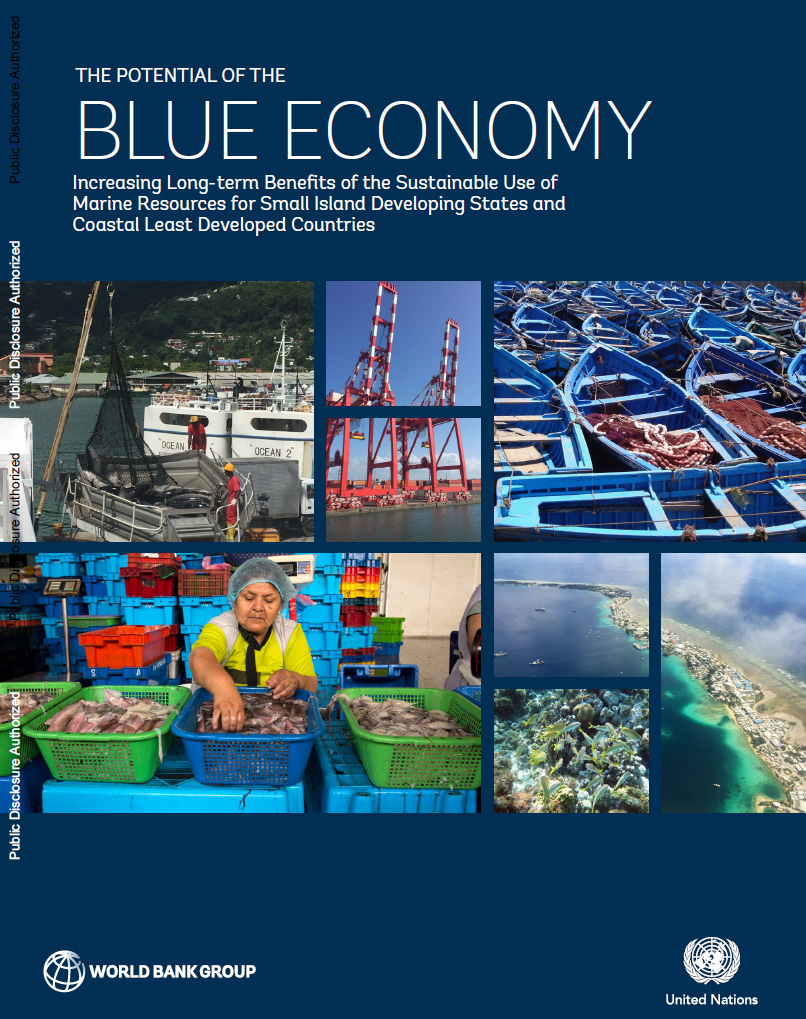Building Resilience In Least Developed Countries: A Pathway To Sustainable Development

Table of Contents
Strengthening Institutional Capacity and Governance
Good governance, transparency, and accountability are cornerstones of resilience-building in LDCs. Strong institutions are essential for effective policymaking, resource allocation, and service delivery. Without them, even the best-intentioned development initiatives can falter. Improving governance strengthens a nation's ability to absorb shocks and adapt to change.
- Promoting participatory decision-making processes: Engaging local communities in planning and implementation ensures that development projects are relevant and sustainable. This participatory approach fosters ownership and increases the likelihood of long-term success. Examples include community-based natural resource management initiatives and participatory budgeting processes.
- Investing in anti-corruption measures: Corruption diverts resources away from essential services and undermines public trust. Strengthening anti-corruption agencies, promoting transparency in public procurement, and establishing whistleblower protection mechanisms are crucial for building a more resilient and accountable governance structure. Successful examples include strengthening independent audit institutions and implementing asset declaration requirements for public officials.
- Strengthening the rule of law and judicial systems: A fair and efficient justice system is vital for protecting property rights, enforcing contracts, and resolving disputes. This provides a stable environment for investment and economic growth, key components of resilience. Initiatives include judicial reform programs aimed at improving efficiency and access to justice, and training programs for judges and lawyers.
- Improving public financial management: Effective public financial management ensures that resources are used efficiently and transparently. This includes strengthening budget planning and execution, improving internal controls, and enhancing audit functions. Implementing International Public Sector Accounting Standards (IPSAS) can be a significant step in this direction.
Investing in Human Capital and Social Protection
Human capital—the knowledge, skills, and health of a nation's people—is a critical asset for building resilience. Investing in education, healthcare, and social safety nets empowers individuals and communities to withstand shocks and bounce back stronger.
- Improving access to quality education, particularly for girls and marginalized groups: Education equips individuals with the skills and knowledge they need to participate in the economy and contribute to society. Focusing on girls' education has a multiplier effect, impacting family health, economic opportunities, and overall societal progress. Initiatives should include expanding access to primary and secondary education, improving the quality of teaching, and providing scholarships for marginalized groups.
- Strengthening healthcare systems to address prevalent health challenges: Healthy populations are more resilient to shocks. Strengthening healthcare systems, including disease prevention and management, increases a nation's ability to cope with health crises and pandemics. This requires investments in infrastructure, personnel training, and access to essential medicines and healthcare services.
- Establishing robust social protection programs, including unemployment benefits and disaster relief: Social safety nets provide a critical buffer against economic hardship and natural disasters. These programs can include cash transfers, food assistance, and unemployment benefits, offering vital support during times of crisis. Examples include conditional cash transfer programs that incentivize school attendance and healthcare visits.
Investing in human capital yields long-term benefits, fostering economic growth, reducing inequality, and increasing overall societal resilience.
Diversifying Economies and Promoting Sustainable Agriculture
LDCs often rely heavily on a few commodities or sectors, making them vulnerable to price fluctuations and external shocks. Economic diversification is essential for building resilience.
- Promoting diversification into higher-value agricultural products: Moving beyond subsistence farming to produce higher-value crops and livestock can significantly increase income and reduce vulnerability to agricultural shocks. This necessitates investments in agricultural research, technology, and market access.
- Investing in renewable energy sources and green technologies: Diversifying energy sources reduces dependence on volatile global energy markets and contributes to climate change mitigation. Investing in renewable energy also creates jobs and fosters economic growth.
- Developing tourism and other service sectors: Tourism and other service sectors can provide diverse employment opportunities and contribute significantly to economic growth, reducing reliance on agriculture or extractive industries. This requires investments in infrastructure, skills development, and marketing.
- Improving infrastructure to support economic diversification: Adequate infrastructure—roads, transportation, communication networks—is essential for facilitating trade, attracting investment, and supporting economic growth across various sectors.
Sustainable agriculture practices, such as conservation agriculture and climate-smart agriculture, are critical for enhancing food security and climate resilience.
Enhancing Disaster Risk Reduction and Climate Change Adaptation
LDCs are disproportionately vulnerable to the impacts of climate change and natural disasters. Building resilience requires proactive measures to reduce risk and adapt to changing conditions.
- Investing in early warning systems and disaster preparedness: Early warning systems provide crucial time for evacuation and other protective measures, minimizing loss of life and property. This requires investing in weather monitoring, communication technologies, and community-based early warning networks.
- Developing climate-resilient infrastructure and agriculture: Infrastructure and agricultural practices must be adapted to withstand the impacts of climate change, including more frequent and intense extreme weather events. This includes building flood-resistant infrastructure, developing drought-resistant crops, and implementing water conservation techniques.
- Promoting climate change mitigation strategies: Reducing greenhouse gas emissions is crucial for limiting the future impacts of climate change. This involves transitioning to renewable energy, improving energy efficiency, and promoting sustainable land management practices.
- Strengthening community-based disaster risk reduction mechanisms: Community involvement is crucial for effective disaster risk reduction. Empowering local communities to participate in preparedness planning and response efforts enhances their capacity to cope with disasters.
Effective disaster risk reduction and climate change adaptation initiatives require strong partnerships between governments, civil society, and international organizations.
Fostering Regional and International Cooperation
Building resilience in LDCs requires strong regional and international cooperation. Collaborative efforts are essential for sharing knowledge, mobilizing resources, and creating a supportive environment for sustainable development.
- Strengthening regional economic integration: Regional trade agreements and cooperation initiatives can facilitate trade, investment, and knowledge sharing among LDCs, promoting economic growth and resilience.
- Facilitating South-South cooperation and knowledge sharing: Sharing experiences and best practices among LDCs is crucial for accelerating progress. South-South cooperation initiatives can foster learning and innovation, enabling countries to learn from each other's successes and challenges.
- Mobilizing international development assistance: International development assistance plays a crucial role in supporting resilience-building efforts in LDCs. This assistance should be aligned with national development priorities and prioritize long-term sustainability.
- Advocating for debt relief and fairer trade practices: High levels of debt and unfair trade practices can hinder development and resilience-building in LDCs. Advocating for debt relief and fairer trade policies is essential for creating a more equitable global economic system.
International organizations and developed countries have a vital role to play in supporting LDCs' resilience-building efforts.
Conclusion
Building resilience in Least Developed Countries requires a multi-faceted approach addressing institutional capacity, human capital, economic diversification, disaster risk reduction, and international cooperation. Strengthening one area invariably supports the others; for instance, improved governance enhances the effectiveness of social protection programs, while economic diversification reduces vulnerability to climate shocks. Building resilience in Least Developed Countries requires a concerted and sustained effort from governments, civil society, the private sector, and the international community. By prioritizing the strategies outlined above, we can help these vulnerable nations build a more sustainable and prosperous future. Let's commit to strengthening resilience in Least Developed Countries and empower them to thrive.

Featured Posts
-
 Sister Exposes Rift With Zendaya Cancer Neglect And A Broken Family Bond
May 07, 2025
Sister Exposes Rift With Zendaya Cancer Neglect And A Broken Family Bond
May 07, 2025 -
 Lotto 6aus49 Am Mittwoch 9 April 2025 Die Aktuellen Gewinnzahlen
May 07, 2025
Lotto 6aus49 Am Mittwoch 9 April 2025 Die Aktuellen Gewinnzahlen
May 07, 2025 -
 Impact Of Expanded Manufacturing Tax Credits On Ontario Businesses
May 07, 2025
Impact Of Expanded Manufacturing Tax Credits On Ontario Businesses
May 07, 2025 -
 Warriors Coach Kerr Optimistic About Currys Return From Injury
May 07, 2025
Warriors Coach Kerr Optimistic About Currys Return From Injury
May 07, 2025 -
 Who Wants To Be A Millionaire Celebrity Special Analyzing The Famous Faces And Their Fortunes
May 07, 2025
Who Wants To Be A Millionaire Celebrity Special Analyzing The Famous Faces And Their Fortunes
May 07, 2025
